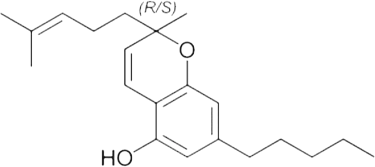Education
Learn About: Cannabis
Cannabis Dispensary located in Brockton, MA
Are you new to the world of cannabis? The following articles will help you learn how to use cannabis, what type you should be using, and how cannabis works.
Cannabis Education
What is Cannabis?
The term cannabis refers to a family of three plants with psychoactive and medical properties, known as Cannabis sativa, Cannabis indica, and Cannabis ruderalis. Once the flowers of these plants are dried and harvested, you’re left with one of the most common forms of relief in the world. Some call it pot, some call it weed, and others call it marijuana. As marijuana becomes legal in more areas, names for it are evolving.
Today, more and more people are using the term cannabis to refer to weed. Cannabis is usually consumed for its calming and relaxing effects. In some U.S. states, it’s also prescribed to help with a range of medical conditions, including chronic pain, glaucoma, poor appetite, etc….. Always keep in mind that even though cannabis comes from a plant and is considered natural, it still possesses strong effects, both positive and negative.
Cannabis Education
History Of The Plant
Marijuana, also known as cannabis, pot, grass, etc….. Has a long history of human use. Most ancient cultures didn’t grow the plant to get the effects of being high, but as herbal medicine, starting in Asia and dating back to around 500 BC. The history of cannabis cultivation in America dates back to the early colonists, who grew hemp for textiles and rope.
The hemp or cannabis plant originally evolved in Central Asia before people transported the plant into Africa, Europe and eventually the Americas. Hemp fiber was used to make sails, paper, clothing and rope, and its seeds were used as food.
Due to the fact that it’s a fast-growing plant that has many uses and is easy to cultivate, hemp was widely grown throughout colonial America and at Spanish missions in the Southwest. Back in the early 1600s, the Virginia, Massachusetts and Connecticut colonies required farmers to grow hemp. These colonial hemp plants had very low levels of tetrahydrocannabinol (THC), the chemical responsible for marijuana’s mind-altering effects…
Sativa
One type of marijuana classification is sativa. Leaves of this species of marijuana plant tend to be lighter in color as well as narrower than that of Indica.
Cannabis harvested from this species of plant is associated with a boost of energy, stimulating effect that gives users a buzz that doesn’t make you drowsy as much as it is uplifting. Sativa marijuana plants tend to grow in hot, dry climates and can be found growing in various regions across the world. Sativa also typically has less CBD and more THC and promotes productivity as well as creativity.
Hybrid
A cannabis plant that’s bred to inherit the most favorable characteristics from its two parent plants.
Hybrid strains can be a combination of any plant varieties and will typically depict phenotypes that are either sativa-dominant, indica-dominant, or equally balanced. Hybrid weed plants may also contain genetics from ruderalis varieties, a third variety of the cannabis plant that isn’t dependent on light exposure to start flowering, a process known as “auto-flowering”.
Indica
Another type of marijuana classification is indica. Leaves of this species of marijuana plant tend to be darker in color as well as wider than that of sativa.
Cannabis harvested from this species of plant can be associated with sleepiness, relief to those suffering from chronic pain, appetite, reduced nausea, relaxing and therapeutic qualities. Indica typically grows faster, strains tend to have higher doses of CBD and lower levels of the psychoactive compound THC.
Cannabis Education
Sativa, Indica or Hybrid?
A wide variety of retailers classify cannabis into three main categories: sativa, indica or hybrid. Over the years, there has been an increasingly considerable debate over these terms and their applications. Some have claimed there is little difference between the two species and their effects, contrary to popular belief. It is important to consider the commonly associated effects:
- Sativa strains are associated with an upbeat, stimulating head high and are commonly associated with daytime use. This will leave users feeling invigorated.
- Indica strains are associated with relaxation, drowsiness and pain relief. Indica strains are commonly associated with nighttime use and are considered to promote a mellow feel.
- Hybrid strains are a type of cannabis created by combining the two species of weed: sativa and indica. This will produce effects that will be more balanced throughout the body. This makes hybrid strains a great choice for a wide variety of users.
Terpene Breakdown
Terpenes are aromatic molecules that are responsible for the unique aroma and taste of any individual strain. They assist other cannabis molecules to produce a desired effec and Important to the overall cannabis experience due to their influence on the body and mind. Shopping by smell can help consumers find strains that can best suit their needs.
Myrcene
Myrcene is the most abundant terpene in cannabis, which is where it’s mostly found in nature. In fact, one study showed that myrcene makes up as much as 65% of the total terpene profile in some strains. Myrcene smell often reminds of earthy, musky notes, resembling cloves. Also, it has a fruity, red grape-like aroma. Strains that contain 0.5% of this terpene are usually indicas with sedative effects. It has also been reported that myrcene is useful in reducing inflammation and chronic pain, which is why it’s usually recommended as a supplement during cancer treatments.
Limoncene
Limonene is the second most abundant terpene in all cannabis strains, but not all strains necessarily have it. As its name says, limonene gives strains a citrusy smell that resembles lemons, which is no surprise as all citrus fruits contain large amounts of this compound. Limonene is used in cosmetics and also in cleaning products. For therapeutic purposes, limonene is known to improve mood and reduce stress. Researchers also found it to have antifungal and antibacterial properties and one research even found it to have a role in reducing tumor size. Strains that have “lemon” or “sour” in their name are usually rich in limonene.
Linalool
This terpene is the most responsible for the recognizable marijuana smell with its spicy and floral notes. Linalool is also found in lavender, mint, cinnamon and coriander. What’s interesting is that just like those aromatic herbs, it has very strong sedative and relaxing properties. Patients suffering from arthritis, depression, seizures, insomnia and even cancer, have all found aid in this amazing terpene. Some well known linalool strains are Amnesia Haze, Special Kush, Lavender, LA Confidential, and OG Shark.
Caryophyllene
Caryophyllene is best known for its spicy and peppery note, caryophyllene is also found in black pepper, cinnamon, cloves, and spices like oregano, basil and rosemary. Beta-caryophyllene binds to CB2 receptors, which makes it an ingredient in anti-inflammatory topicals and creams. Caryophyllene is the only terpene that binds to cannabinoid receptors. Besides its analgesic and anti-anxiety properties, some studies have found that caryophyllene has some very promising properties when it comes to alcoholism rehabilitation. A group of scientists performed research on mice and found that this terpene reduces voluntary intake of alcohol. They even recommended caryophyllene for treating alcohol withdrawal symptoms. You can benefit from caryophyllene by using strains like Super Silver Haze, Skywalker and Rock Star
Alpha-Pinene & Beta-Pinene
These two cannabis terpenes smell like pine trees and that’s also where they can be found in large amounts. Other plants rich in pinene include rosemary, orange peels, basil, parsley and cannabis of course. Like many others, pinene terpenes have an anti-inflammatory effect on humans. But more importantly, they help improve airflow and respiratory functions, while also helping to reduce memory loss related to THC. I know that this can sound weird because we’re talking about cannabis, but if the strain is rich in alpha and beta pinene, it can actually help with asthma. Pinene also helps patients with arthritis, Crohn’s disease and cancer. You can find pinene in strains like Jack Herer, Strawberry Cough, Blue Dream, Island Sweet Skunk, Dutch Treat and Romulan.
Eucalyptol
Also known as cineole, eucalyptol is the primary terpene of the eucalyptus tree. It has recognizable minty and cool tones in its smell but most cannabis strains do not contain large amounts of it. It usually makes up around 0.06% of a strains complete terpene profile. This terpene has been used in cosmetics as well as medicine. When it comes to its medical value, eucalyptol relieves pain but also slows the growth of bacteria and fungus. Although it is still in the early stages in research, this terpene has shown some promising effects on Alzheimer’s as well. Eucalyptol can be found in Super Silver Haze and Headband.
Trans-Nerolidol
This one is a secondary terpene found mostly in flowers like jasmine, lemongrass, and tea tree oil. The smell of trans-nerolidol reminds of a mixture of rose, citrus and apples and can be described in general as woody, citrus and floral. Trans-nerolidol is best known for its antiparasitic, antioxidant, antifungal, anticancer and antimicrobial properties. Strains like Island Jack Herer, Sweet Skunk, and Skywalker OG are rich in nerolidol.
Humilene
Humulene was the first terpene found in hops. Its aroma contains earthy, woody and spicy notes. Besides cannabis, it can be also found in clove, sage, and black pepper. It has a variety of medical properties. Early research has shown humulene to be anti-proliferative, meaning it prevents cancer cells from growing. Also, it proved to be effective in suppressing appetite, making it a potential weight loss tool. Furthermore, like many other cannabis terpenes mentioned above, it also reduces inflammation, relieves pain and fights bacterial infections. You can find humulene in strains like White Widow, Headband, Girl Scout Cookies, Sour Diesel, Pink Kush and Skywalker OG.
Delta-3 Carene
This terpene is found in a number of plants like rosemary, basil, bell peppers, cedar and pine. Its aroma is sweet and resembles the smell of cypress tree. When it comes to the medical side of carene, it seems to be mostly beneficial in healing broken bones. That gives hope to patients suffering from osteoporosis, arthritis and even fibromyalgia. What is also interesting about this terpene is that it stimulates our memory and helps memory retention. This is a major point in finding a cure for Alzheimer’s disease.
Borneol
Borneol, with its herbal minty scent, can be found in herbs like rosemary, mint and camphor. This terpene is a good natural insect repellent which makes it great in preventing diseases like the West Nile virus, being passed by ticks, fleas, mosquitoes etc. One study found that borneol kills breast cancer cells. It’s also widely used in Chinese traditional medicine, in acupuncture to be precise. Strains high in borneol are Amnesia Haze, Golden Haze, K13 Haze
Terpineol
The aroma of terpineol can be best described as floral-like, reminiscent of lilacs, apple blossom, and a little bit citrusy. Terpineol tastes like anise and mint. Terpineol has a pleasant scent, similar to lilac, and is a common ingredient in perfumes, cosmetics, and flavors. It relaxes heavily and it’s usually the one responsible for the notorious couch lock effect. Medical benefits of terpineol also include antibiotic and antioxidant properties. It can be found Girl Scout Cookies, Jack Herer, and OG Kush strains.
Camphene
The best way to describe the smell of camphene is fir needles, musky earth and damp woodlands. Camphene aroma is often mistaken with myrcene, which is that trademark marijuana smell as most of us know it. From the medical point of view, camphene has great potential. When mixed with vitamin C, it becomes a powerful antioxidant. It is widely used in conventional medicine as a topical for skin issues like eczema and psoriasis. Its greatest potential lies in its ability to lower the levels of cholesterol and triglycerides in the blood, further lowering the risk of cardiovascular diseases. Camphene is present in Ghost OG, Strawberry Banana, Mendocino Purps.
Valencene
This terpene got its name from sweet Valencia oranges — where it’s been found in large amounts. With its sweet citrusy aromas and flavors, it’s used as an insect repellant, too. Valencene can be found in strains like Tangie and Agent Orange.
Geraniol
Besides cannabis, geraniol can be found in lemons and tobacco. Its smell reminds of rose grass, peaches and plums. It’s usually used in aromatic bath products and body lotions. Geraniol has shown a lot of potential as a neuroprotectant and antioxidant. It is present in strains like Amnesia Haze, Great White Shark, Afghani, Headband, Island Sweet Skunk, OG Shark and Master Kush.
Myrcene
Myrcene is the most abundant terpene in cannabis, which is where it’s mostly found in nature. In fact, one study showed that myrcene makes up as much as 65% of the total terpene profile in some strains. Myrcene smell often reminds of earthy, musky notes, resembling cloves. Also, it has a fruity, red grape-like aroma. Strains that contain 0.5% of this terpene are usually indicas with sedative effects. It has also been reported that myrcene is useful in reducing inflammation and chronic pain, which is why it’s usually recommended as a supplement during cancer treatments.
Limoncene
Limonene is the second most abundant terpene in all cannabis strains, but not all strains necessarily have it. As its name says, limonene gives strains a citrusy smell that resembles lemons, which is no surprise as all citrus fruits contain large amounts of this compound. Limonene is used in cosmetics and also in cleaning products. For therapeutic purposes, limonene is known to improve mood and reduce stress. Researchers also found it to have antifungal and antibacterial properties and one research even found it to have a role in reducing tumor size. Strains that have “lemon” or “sour” in their name are usually rich in limonene.
Linalool
This terpene is the most responsible for the recognizable marijuana smell with its spicy and floral notes. Linalool is also found in lavender, mint, cinnamon and coriander. What’s interesting is that just like those aromatic herbs, it has very strong sedative and relaxing properties. Patients suffering from arthritis, depression, seizures, insomnia and even cancer, have all found aid in this amazing terpene. Some well known linalool strains are Amnesia Haze, Special Kush, Lavender, LA Confidential, and OG Shark.
Caryophyllene
Caryophyllene is best known for its spicy and peppery note, caryophyllene is also found in black pepper, cinnamon, cloves, and spices like oregano, basil and rosemary. Beta-caryophyllene binds to CB2 receptors, which makes it an ingredient in anti-inflammatory topicals and creams. Caryophyllene is the only terpene that binds to cannabinoid receptors. Besides its analgesic and anti-anxiety properties, some studies have found that caryophyllene has some very promising properties when it comes to alcoholism rehabilitation. A group of scientists performed research on mice and found that this terpene reduces voluntary intake of alcohol. They even recommended caryophyllene for treating alcohol withdrawal symptoms. You can benefit from caryophyllene by using strains like Super Silver Haze, Skywalker and Rock Star
Alpha-Pinene & Beta-Pinene
These two cannabis terpenes smell like pine trees and that’s also where they can be found in large amounts. Other plants rich in pinene include rosemary, orange peels, basil, parsley and cannabis of course. Like many others, pinene terpenes have an anti-inflammatory effect on humans. But more importantly, they help improve airflow and respiratory functions, while also helping to reduce memory loss related to THC. I know that this can sound weird because we’re talking about cannabis, but if the strain is rich in alpha and beta pinene, it can actually help with asthma. Pinene also helps patients with arthritis, Crohn’s disease and cancer. You can find pinene in strains like Jack Herer, Strawberry Cough, Blue Dream, Island Sweet Skunk, Dutch Treat and Romulan.
Eucalyptol
Also known as cineole, eucalyptol is the primary terpene of the eucalyptus tree. It has recognizable minty and cool tones in its smell but most cannabis strains do not contain large amounts of it. It usually makes up around 0.06% of a strains complete terpene profile. This terpene has been used in cosmetics as well as medicine. When it comes to its medical value, eucalyptol relieves pain but also slows the growth of bacteria and fungus. Although it is still in the early stages in research, this terpene has shown some promising effects on Alzheimer’s as well. Eucalyptol can be found in Super Silver Haze and Headband.
Trans-Nerolidol
This one is a secondary terpene found mostly in flowers like jasmine, lemongrass, and tea tree oil. The smell of trans-nerolidol reminds of a mixture of rose, citrus and apples and can be described in general as woody, citrus and floral. Trans-nerolidol is best known for its antiparasitic, antioxidant, antifungal, anticancer and antimicrobial properties. Strains like Island Jack Herer, Sweet Skunk, and Skywalker OG are rich in nerolidol.
Humilene
Humulene was the first terpene found in hops. Its aroma contains earthy, woody and spicy notes. Besides cannabis, it can be also found in clove, sage, and black pepper. It has a variety of medical properties. Early research has shown humulene to be anti-proliferative, meaning it prevents cancer cells from growing. Also, it proved to be effective in suppressing appetite, making it a potential weight loss tool. Furthermore, like many other cannabis terpenes mentioned above, it also reduces inflammation, relieves pain and fights bacterial infections. You can find humulene in strains like White Widow, Headband, Girl Scout Cookies, Sour Diesel, Pink Kush and Skywalker OG.
Delta-3 Carene
This terpene is found in a number of plants like rosemary, basil, bell peppers, cedar and pine. Its aroma is sweet and resembles the smell of cypress tree. When it comes to the medical side of carene, it seems to be mostly beneficial in healing broken bones. That gives hope to patients suffering from osteoporosis, arthritis and even fibromyalgia. What is also interesting about this terpene is that it stimulates our memory and helps memory retention. This is a major point in finding a cure for Alzheimer’s disease.
Borneol
Borneol, with its herbal minty scent, can be found in herbs like rosemary, mint and camphor. This terpene is a good natural insect repellent which makes it great in preventing diseases like the West Nile virus, being passed by ticks, fleas, mosquitoes etc. One study found that borneol kills breast cancer cells. It’s also widely used in Chinese traditional medicine, in acupuncture to be precise. Strains high in borneol are Amnesia Haze, Golden Haze, K13 Haze
Terpineol
The aroma of terpineol can be best described as floral-like, reminiscent of lilacs, apple blossom, and a little bit citrusy. Terpineol tastes like anise and mint. Terpineol has a pleasant scent, similar to lilac, and is a common ingredient in perfumes, cosmetics, and flavors. It relaxes heavily and it’s usually the one responsible for the notorious couch lock effect. Medical benefits of terpineol also include antibiotic and antioxidant properties. It can be found Girl Scout Cookies, Jack Herer, and OG Kush strains.
Camphene
The best way to describe the smell of camphene is fir needles, musky earth and damp woodlands. Camphene aroma is often mistaken with myrcene, which is that trademark marijuana smell as most of us know it. From the medical point of view, camphene has great potential. When mixed with vitamin C, it becomes a powerful antioxidant. It is widely used in conventional medicine as a topical for skin issues like eczema and psoriasis. Its greatest potential lies in its ability to lower the levels of cholesterol and triglycerides in the blood, further lowering the risk of cardiovascular diseases. Camphene is present in Ghost OG, Strawberry Banana, Mendocino Purps.
Valencene
This terpene got its name from sweet Valencia oranges — where it’s been found in large amounts. With its sweet citrusy aromas and flavors, it’s used as an insect repellant, too. Valencene can be found in strains like Tangie and Agent Orange.
Geraniol
Besides cannabis, geraniol can be found in lemons and tobacco. Its smell reminds of rose grass, peaches and plums. It’s usually used in aromatic bath products and body lotions. Geraniol has shown a lot of potential as a neuroprotectant and antioxidant. It is present in strains like Amnesia Haze, Great White Shark, Afghani, Headband, Island Sweet Skunk, OG Shark and Master Kush.
Cannabinoids
The indica vs sativa contrast was once the most helpful way to distinguish between different subspecies of cannabis and the psychoactive effects they produce.

Cannabinoids
THC
THC is an intoxicating cannabinoid commonly described as coinciding with the feeling of being extremely relaxed. It is the most researched cannabinoid, and has 3 reported phases: THCa, Delta-9 THC, and CBN:
- Can help with: Pain, Glaucoma, Insomnia, Low Appetite, Muscle Spasticity, Nausea
- High THC Strains: Girl Scout Cookies (GSC), Ghost OG, Bruce Banner
Cannabinoids
CBD
CBD is a non-intoxicating cannabinoid that reduces and modulates the intoxicating effects of THC. While it does not typically produce psychoactive effects, it can have calming and relaxing effects in most individuals:
- Can help with: Seizures, Inflammation, Pain, Nausea, Migraines, Anxiety
- High THC Strains: Harlequin, Ringo’s Gift, ACDC


Cannabinoids
THCA
Tetrahydrocannabinolic acid (THCA) is a cannabis compound. Unlike marijuana’s famous tetrahydrocannabinol (THC), which gives the user the characteristic high that makes weed usage famous, tetrahydrocannabinol acid is a non-psychoactive cannabinoid that researchers have found in both raw and live cannabis plants.
As the marijuana plant’s leaves, stems, buds, and flowers dry out, the plant’s THCA turns into THC. Heat also makes the THCA convert even faster to THC. Nowadays, the most coveted strains of cannabis have been honed by scientists and researchers to contain not only high levels of THC, but also large amounts of THCA.
It is estimated that 80 to 90 percent of the THC in raw marijuana is stored in the form of THCA within the plant.
Cannabinoids
Cannabinol (CBN)
CBN is what THC will break down into over-time due to exposure to oxygen, UV light, or heat:
- Mildly psychoactive, inducing little to no psychoactive effects
- Strongest cannabinoid identified for promoting sleep


Cannabinoids
Cannabigerol (CBG)
Cannabinoids all start off as CBG:
- The “stem cell” of other cannabinoids
- Can kill or slow bacterial growth, reduce inflammation, inhibit cell growth in tumor/cancer cells, and promote bone growth
Cannabinoids
Tetrahydrocanna-bivarin (THCV)
Psychoactive, causes more of a psychedelic, clear-headed effect:
- Causes the effects of THC to hit you much faster
- Energetic, an appetite suppressant, may help with diabetes, reduces panic attacks, stimulates bone growth and has anticonvulsant properties


Cannabinoids
Cannabichro-mene (CBC)
Benefits include antimicrobial, anti-viral and anti-inflammatory properties:
- It can help with pain relief, depression brain cell growth and migraines
